21 Mar 2022
Analysing different Victron Energy Storage Systems
Introduction
This Tech Talk is a comprehensive analysis of three different Victron ESS systems. It covers the description, operation and power graph study of each case. Furthermore, the document explains the different advantages and disadvantages of each model, as well as its most suitable application.
It is highly recommended to read the previous Tech Talk in order to have a better understanding of ESS and grid-tie systems.
List of Acronyms:
- ESS: Energy Storage System.
- NCL: Non-critical loads.
- CL: Critical loads.
- PV: Photovoltaic.
- MPPT: Maximum power point tracking device
- AC: Alternating current
- DC: Direct current
Victron ES System - Option 1
This system possesses the PV inverters in the AC grid side only.
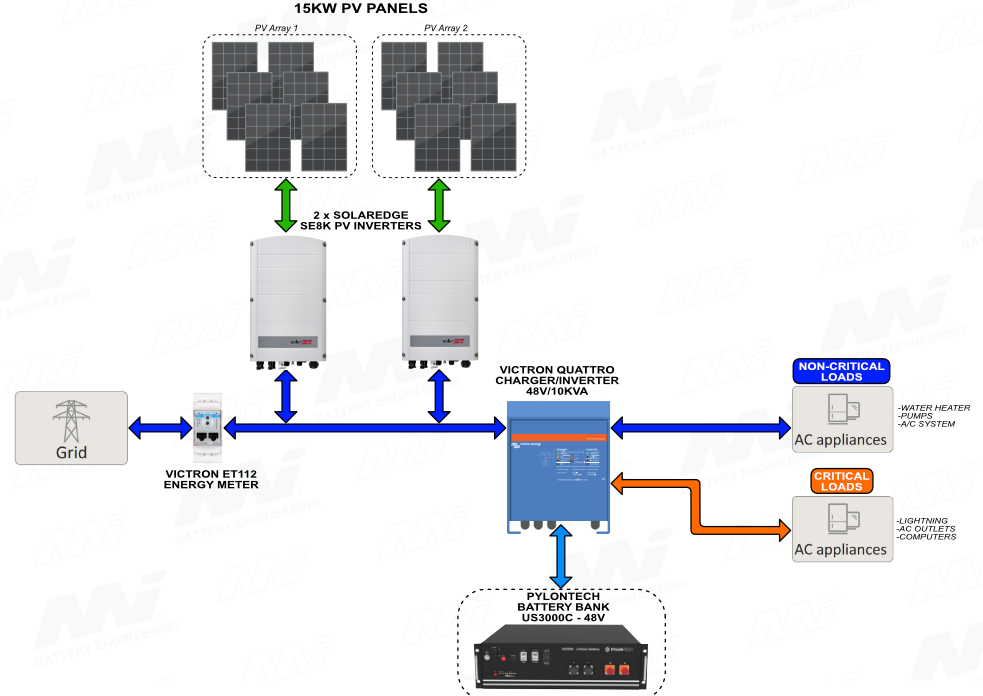
Pros:
- Maximum PV power connected to grid line. Therefore, maximum feed-back to grid
Cons:
- During grid failure, PV inverters are out of service. No solar power for NCL nor charging the batteries.
- Lower efficiency to charge the batteries with solar than other systems.
This type of installation is best suitable for:
- Maximum power export back to the grid is required.
- High grid reliability. Unlikely to have grid failures or interruptions.
- Both CL and NCL use high power during peak-solar time (between 10am and 2pm).
Power graph analysis as follow:
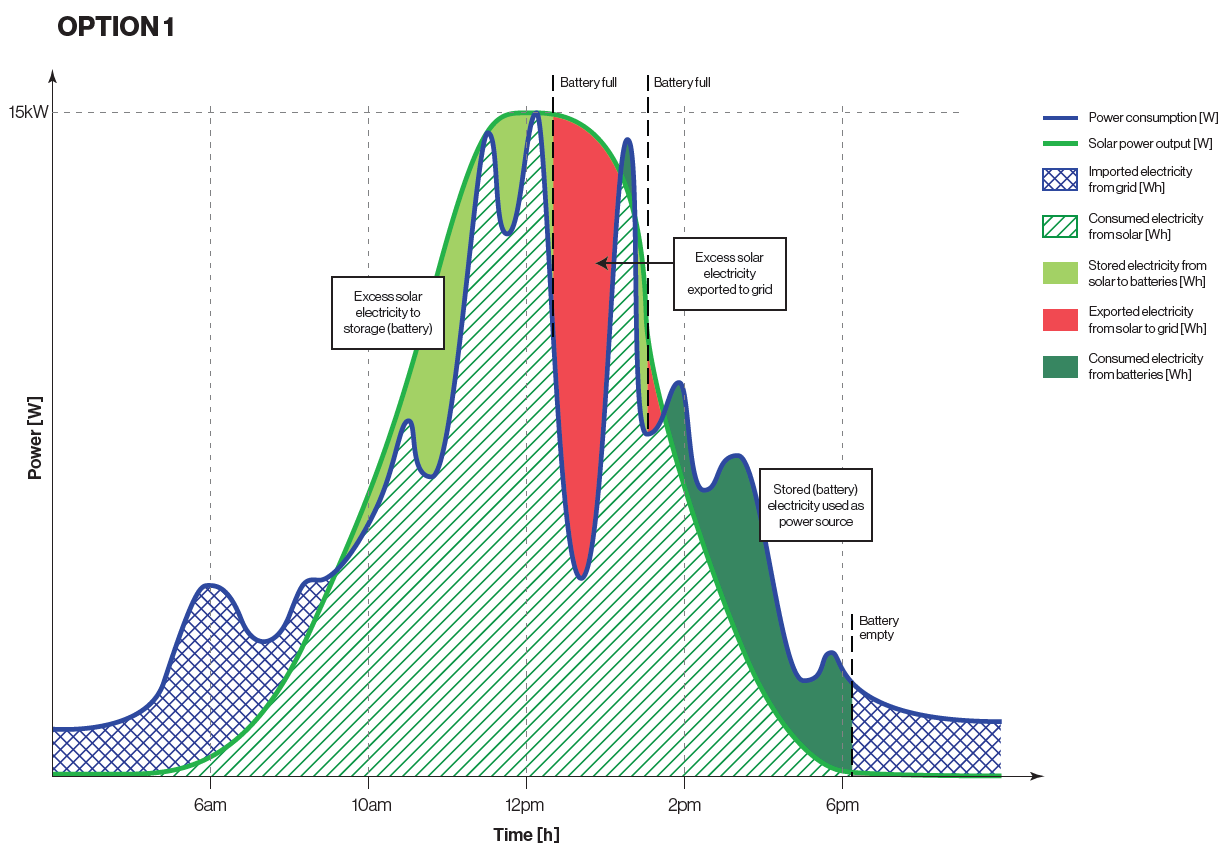
We can see in the graph that the system has high power consumption at midday and it is all coming from the solar production. Furthermore, when the load power drops and the battery bank is full, the maximum solar power can be fed back to the grid. Outside the peak-solar time, the load consumption remains low, so the system keeps the electricity import at minimum.
Victron ES System - Option 2
This system possesses one PV inverter in the AC grid side and one MPPT charger in the DC battery side. The total solar power production is the same as per option 1.
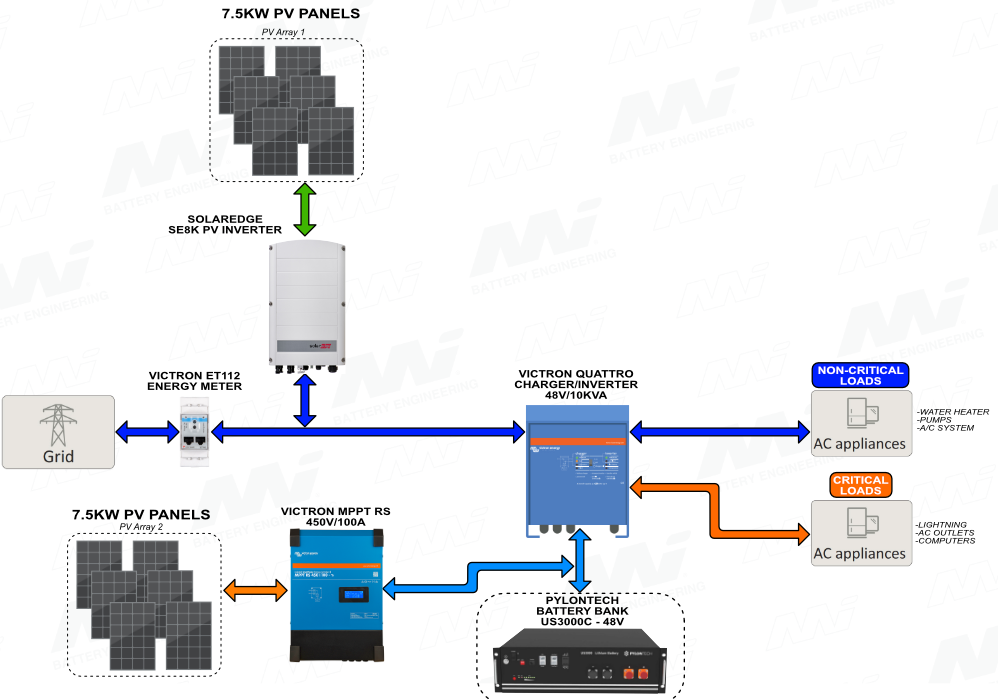
Pros:
- Medium solar power fed back to the grid when not in use.
- Higher efficiency to charge batteries through MPPT than option 1.
- Independent from the grid to charge the battery bank.
- Independent from the grid to power the CL.
Cons:
- Requires one PV inverter and one MPPT. Higher complexity than option 1.
- Usually requires larger battery banks than option 1.
- When no loads are connected and batteries are full, the system feeds back to the grid half the available power (less solar credit refund).
This type of installation is best suitable for:
- Low grid reliability. Very likely to have grid power interruptions.
- CL are mostly required during night-time.
Power graph analysis as follow:
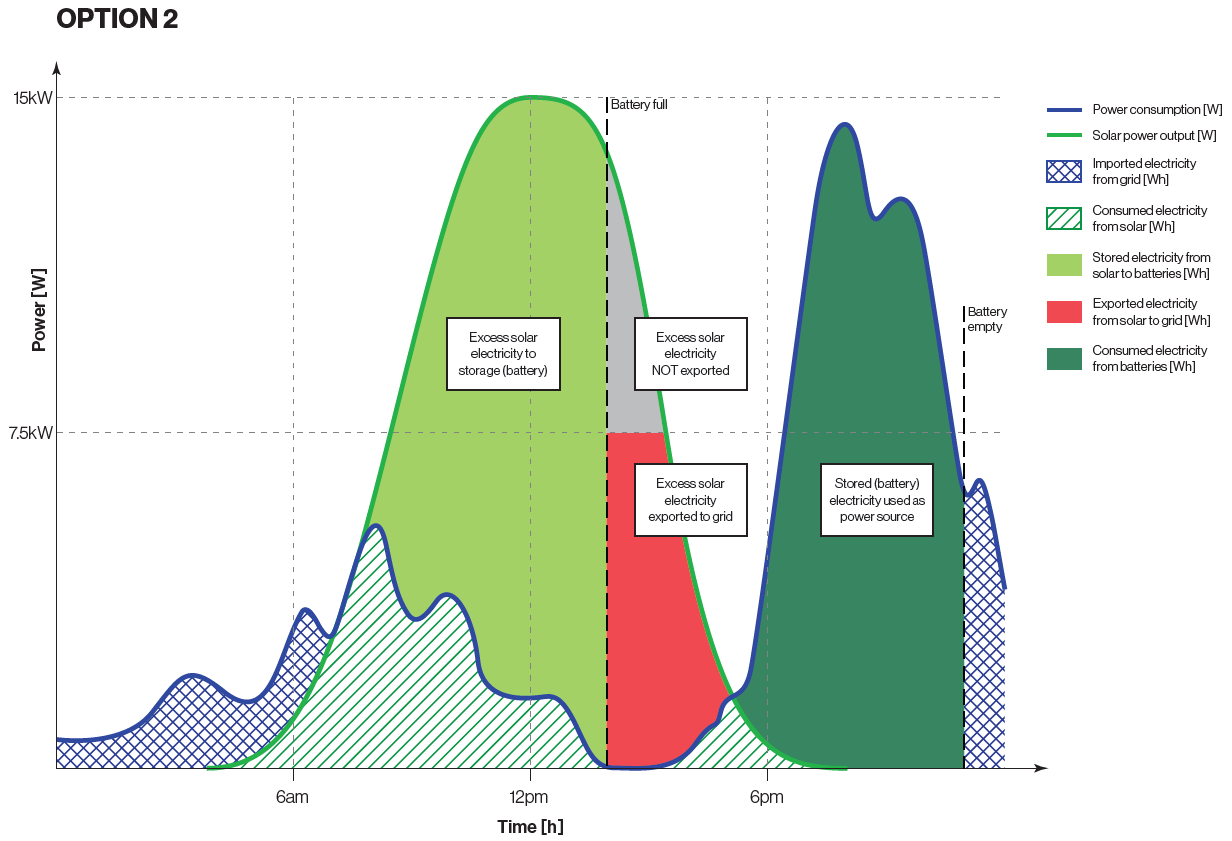
We can see in the graph that the load profile is very low throughout the day. During this time, all the solar power is harvested and stored in battery banks for later use. However, due to the fact there is only one PV inverter connected to the AC grid side, once the batteries are full, the solar power that is exported back to the grid is limited. At night-time, all the power that the load requires comes from the battery bank. Therefore, this system requires large battery bank capable of providing a lot of energy to the load. Once the batteries are fully discharged, the system will start importing power from the grid.
Victron ES System - Option 3
This system possesses two PV inverters similar to the option 1, but one of them is connected straight away to the AC load side. The total solar power production is the same as per option 1.
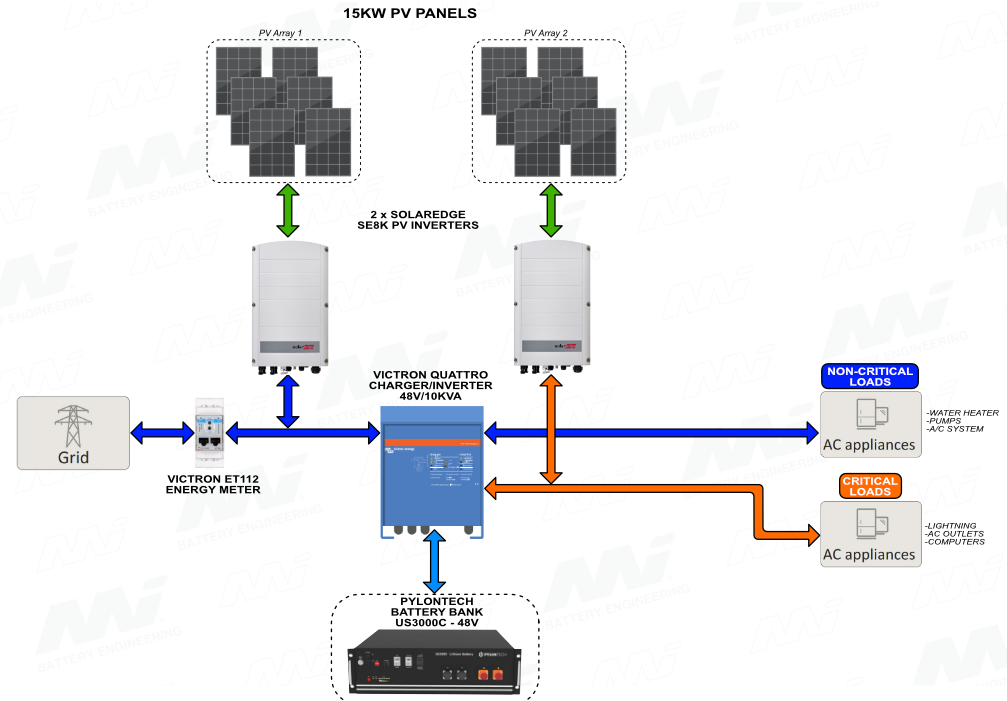
Pros:
- Medium solar power fed back to the grid when not in use.
- Independent from the grid to charge the battery bank. It charges through the PV inverter on the AC output side.
- Independent from the grid to power the CL.
- Higher efficiency to power CL during blackout than option 2.
Cons:
- Lower efficiency to charge the batteries during blackout than option 2.
- When no loads are connected and batteries are full, the system feeds back to the grid half the available power (less solar credit refund).
This type of installation is best suitable for:
- Low grid reliability. Very likely to have grid power interruptions.
- CL are required all-day long.
Power graph analysis as follow:
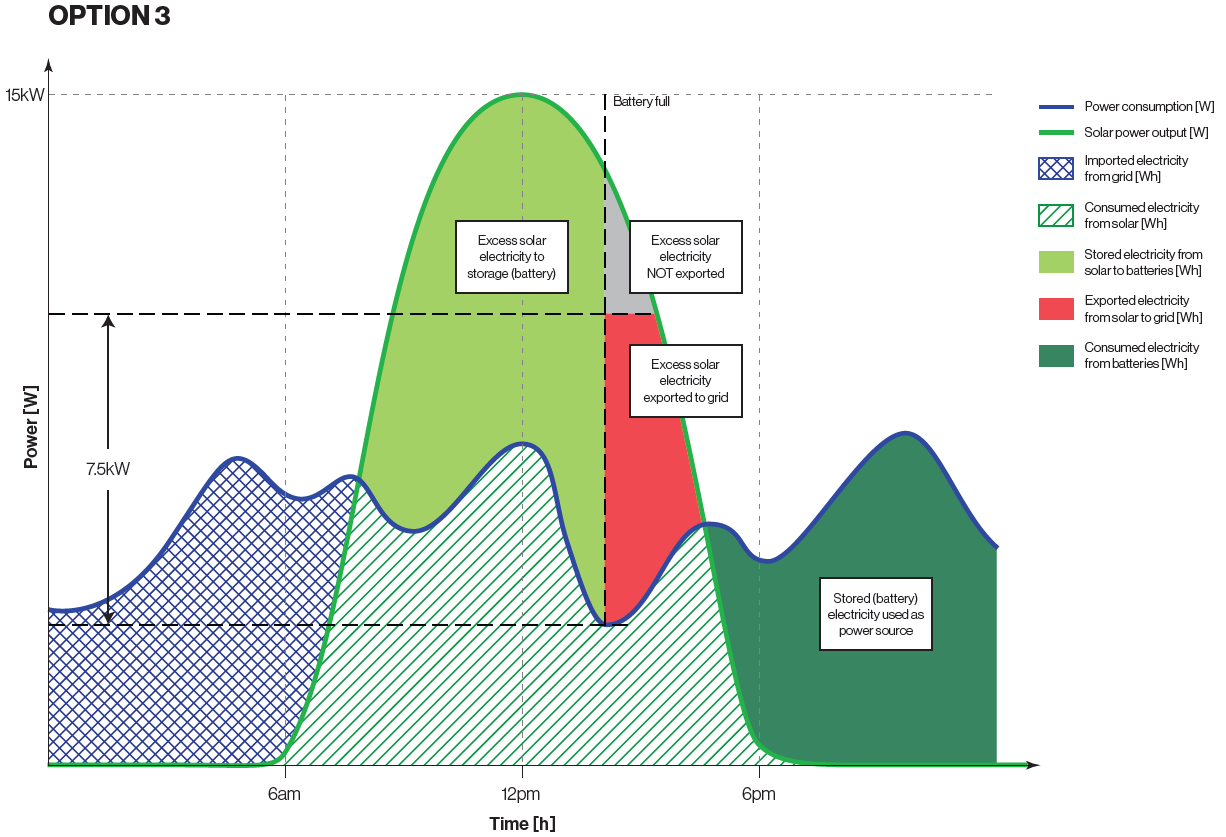
We can see in the graph that the load profile is quite stable throughout the day with some random ups and downs. Before sunrise, the consumed energy is imported from the grid. At some point in the morning, the solar production goes above the load consumption and the system starts storing the extra energy in the battery bank. Similar to the option 2, when the batteries are full, the system cannot export all the solar power to the grid and it is limited by the PV inverter connected on the AC grid side. After sunset, the stored energy in the batteries is used to power the loads.
Conclusion
The above cases are just examples of ESS applications and have to be used as reference only. The intention of this document was to show the versatility of ES systems. The in-depth analysis of each typology and their advantages and disadvantages within a specific application exceed the scope of this Tech Talk.
Gerardo Chiban